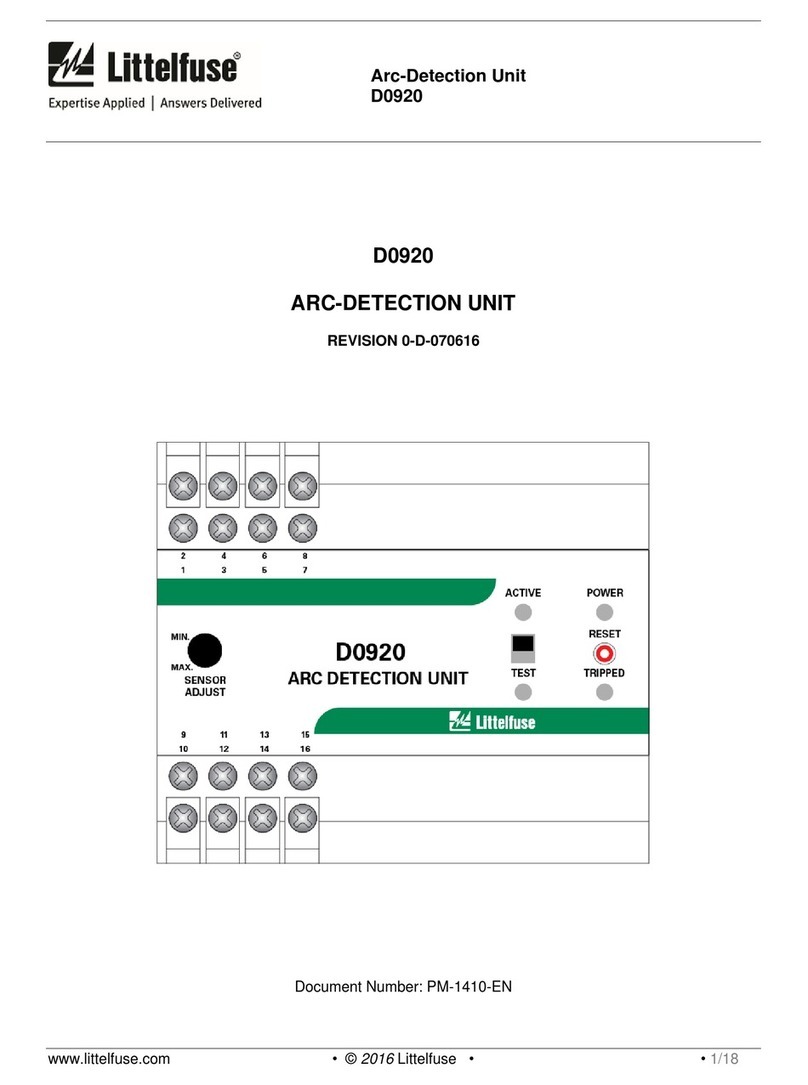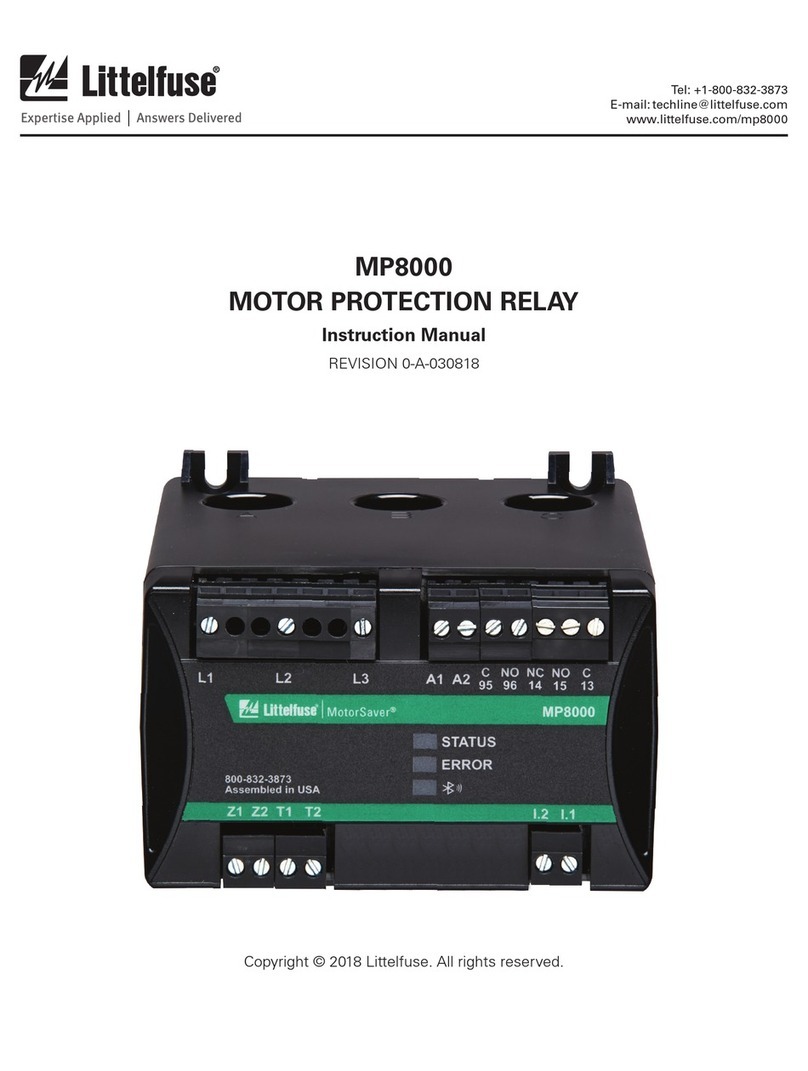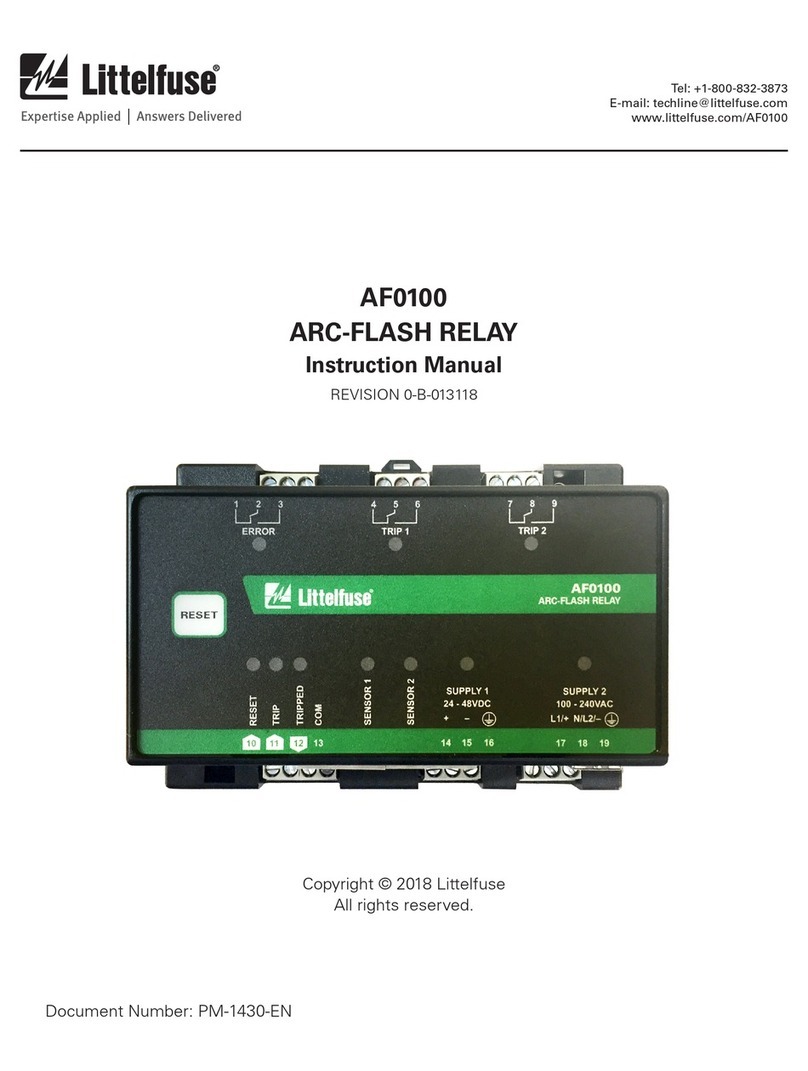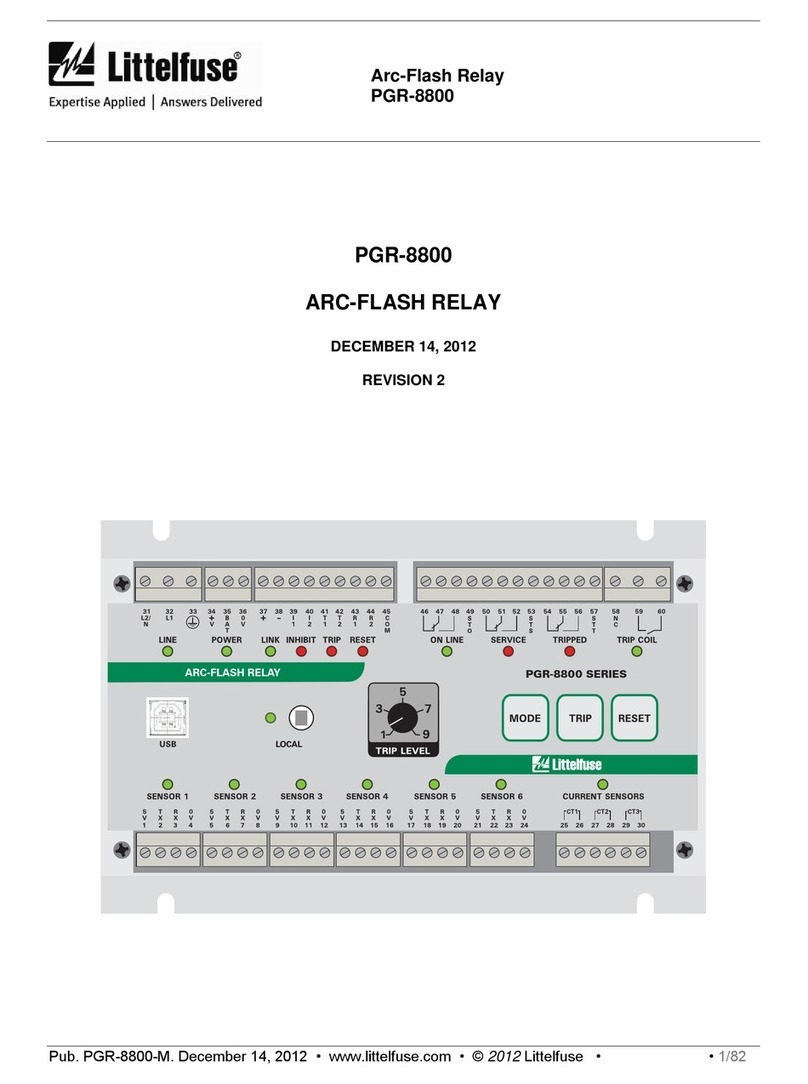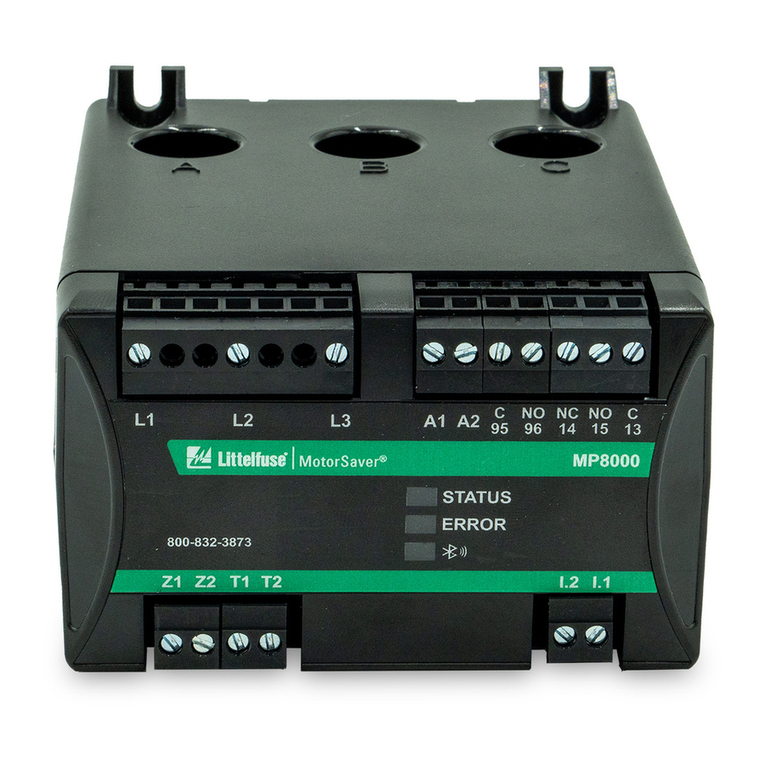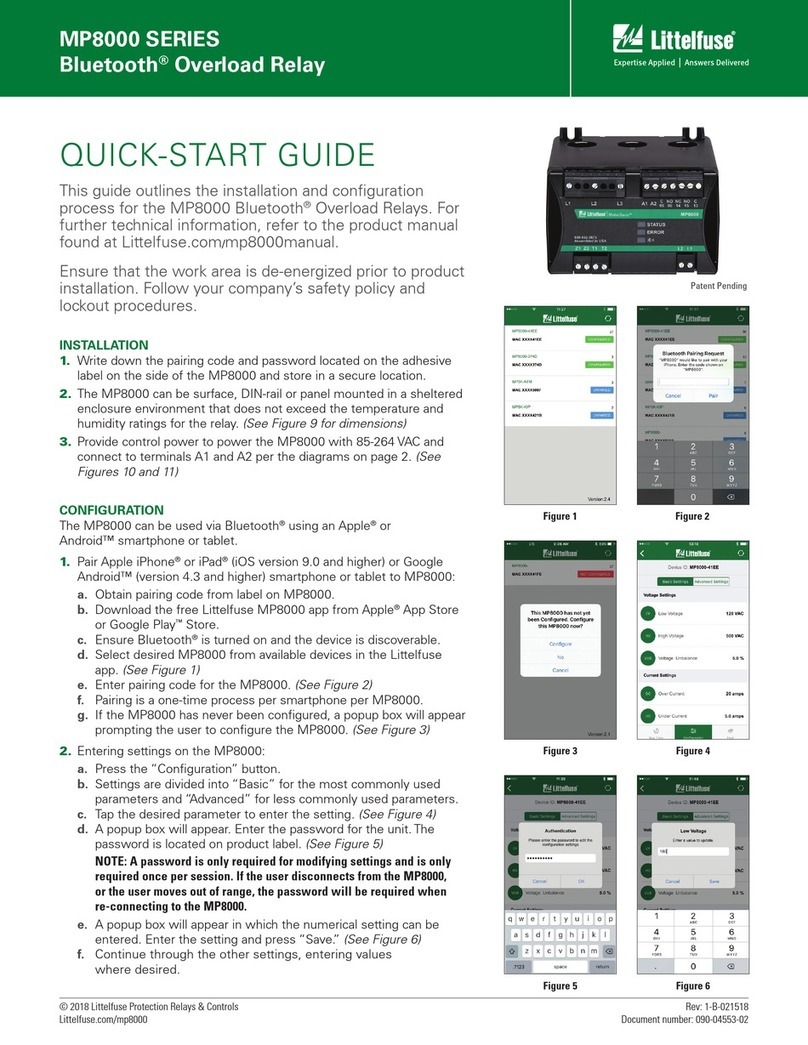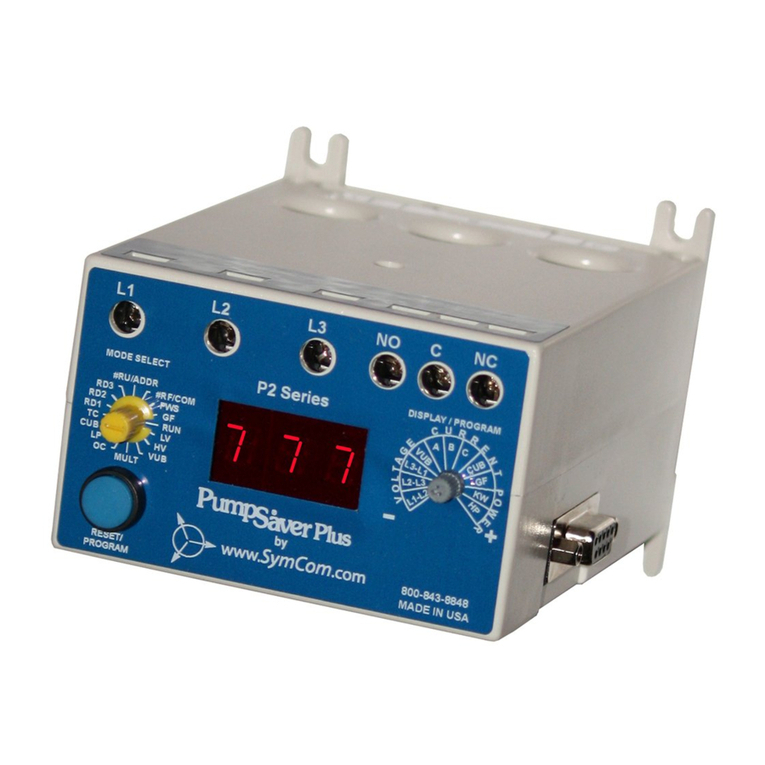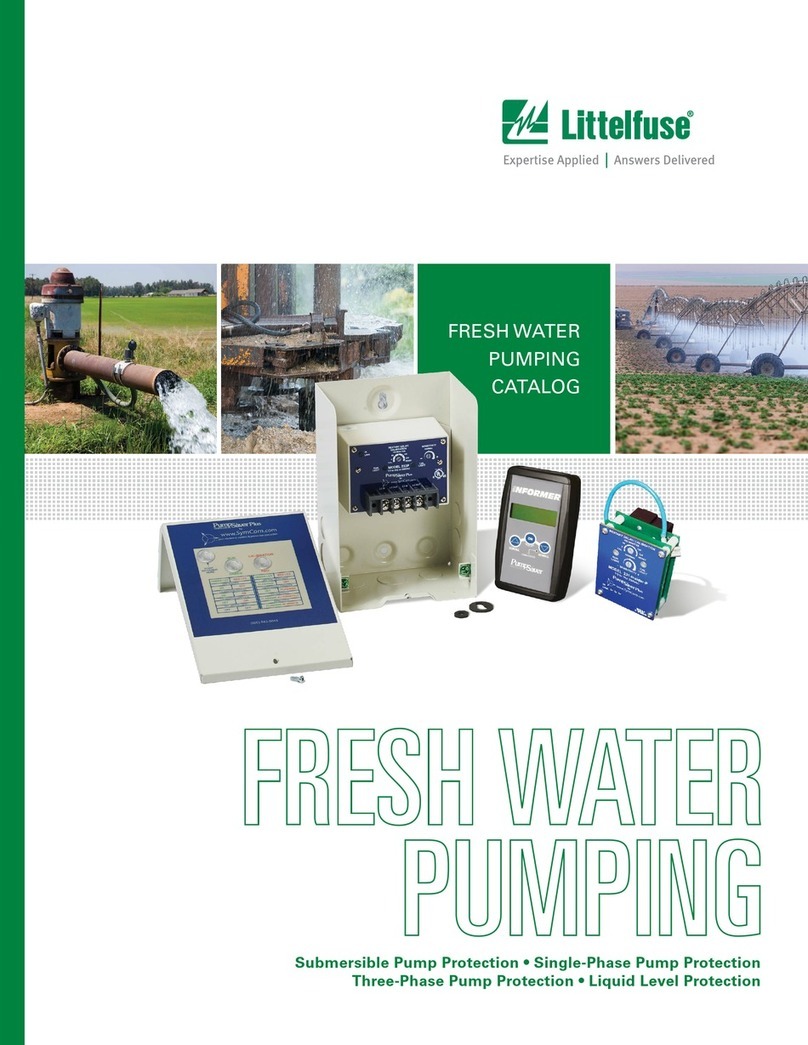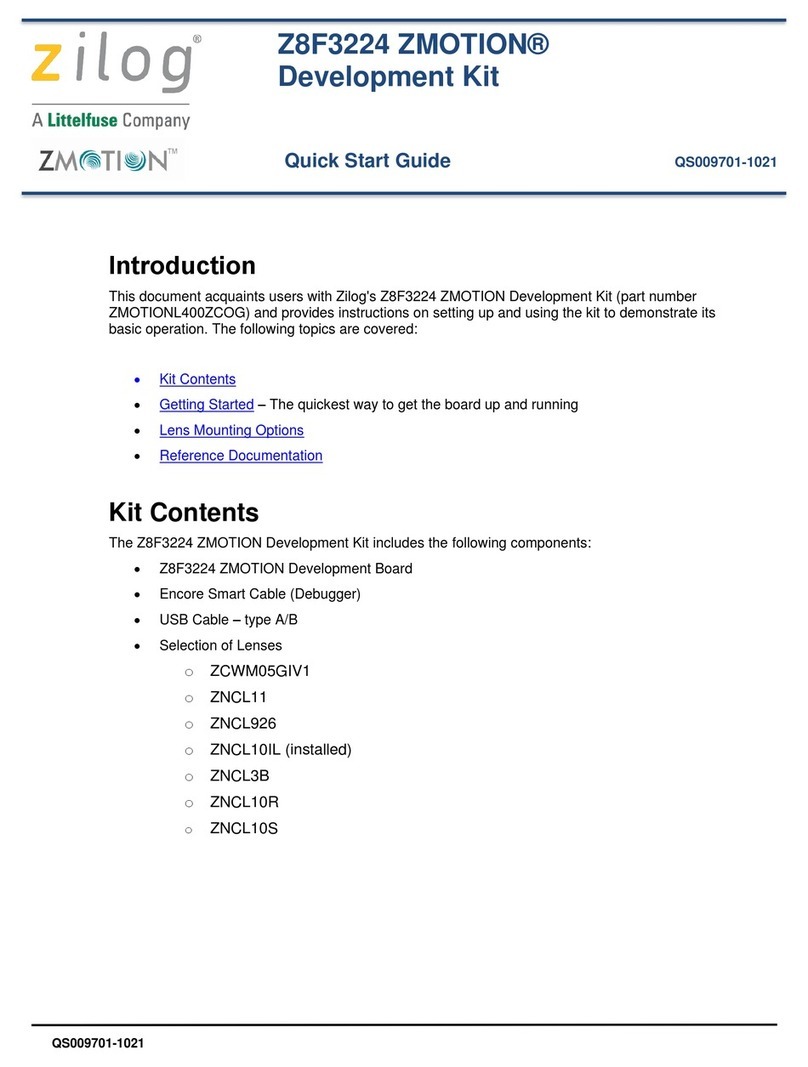
AF0100 Arc-Flash Relay
GENERATOR APPLICATION GUIDE
5Littelfuse.com/ArcFlash© 2017 Littelfuse Products
GENERATOR PROTECTION USING AF0100
Generator to Generator Breaker Connection
While the generator breaker can protect the generator from overcurrent faults, there is often nothing protecting the
connection from the generator to the generator breaker from overcurrent or arc ash.
As a result, an arc in this connection will persist and its destructive energy will increase, being fed from other
sources connected in parallel with the generator as well as the generator itself. Eventually, the amount of energy
required may be enough to trip the generator breaker (assuming it isn’t engulfed in the arc’s plasma cloud) and the
arc will extinguish when enough material has been vaporized that the generator cannot produce enough energy to
maintain the arc, the generator is destroyed, or its fuel source consumed in the arc. Often a fault on the generator
will burn the generator to the ground.
An arc-ash relay monitoring this section of the bus can dramatically reduce the total energy released and therefore
the damage and risk to personnel. One or two point sensors are typically sufcient to monitor the busway/cables
and the breaker cabinet. In the case that an arc is detected, all sources of energy to it must be cut off. The arc-ash
relay must trip the generator breaker but also turn off the generator. The latter is usually accomplished by either
connecting to the automatic voltage regulator (AVR), an emergency stop circuit, or generator controller. Often the
voltages required to trip these two circuits are different and require isolated contacts.
The AF0100 was specically designed for generator applications, with two isolated Form-C trip outputs to cut
off all sources of energy from the arc. A 24-48 Vdc supply allows for power directly from the battery bank and
withstands voltage sags and overvoltages, and the entire relay is designed to withstand vibration. As well, a unit
health contact can be programmed for non-fail-safe so that loss of supply voltage when powering down the
batteries will not cause nuisance alarms for remote monitoring. Finally, its compact design means that it can nd a
home in any generator control panel.
Transformer Enclosure
In applications where medium voltage distribution is required, parallel generators may be connected to a step-
up transformer. It is advantageous to protect the transformer from an arc ash, particularly if there is a shunt trip
that can disconnect it from supply. In this case, one or two sensors in the enclosure monitoring the primary and
secondary connections can dramatically reduce downtime and repair cost for the transformer if an arc ash occurs.
Generator Enclosure
To other parallel generators or utility
Transformer Enclosure
Trip 1 Trip 1Trip 2
AF0100
AVR/
Control Circuit
AF0100
Sensor
Primary Side Sensor
Secondary Side Sensor
Breaker
Sensor
Generator Transformer
To application

